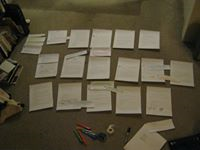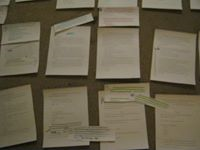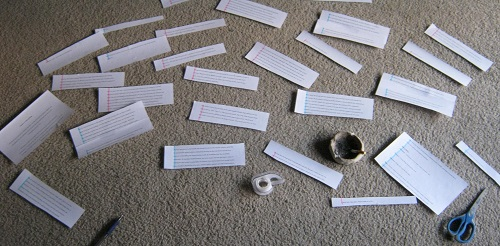On Revision: Cut It Out
BY CHELSEY CLAMMER
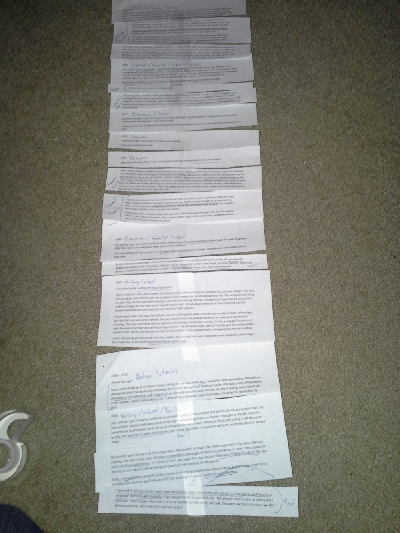
The firehouse burns down. The teacher fails a test. Fahrenheit 451 is a banned book.
Reader, meet irony: when an intended meaning is different than the actual meaning, when a situation may end differently than anticipated.
The difference between appearance and the reality.
This appears to be a craft essay about irony.
I am not doing what was asked of me: write about one aspect of my editing process,specifically the cut-and-tape method.
The Cut-and-Tape Method:
1. Write essay
2. Print out essay
3. Cut up essay so each paragraph is on its own slip of paper
4. Shuffle slips of paper until they are in the exact order in which you want your essay to be told
5. Tape slips together
6. Return to computer and edit accordingly
Cutting is to open up space by slicing away what’s superfluous. There is much to say about white space used in an essay.
As in:
(this space is intentionally left blank)
See? Irony.
But this is supposed to be about cutting. So let’s cut loose, cut to the chase, and be very clear-cut about what we are talking about here: Pages of revisions. But also this: stories cut from the sheaves of my skin.
The scars on my arms speak to how I have a history of cutting. Five years ago when I cut through my flesh, my body opened up, the spaces between skin and soul had more room to explore. This is not a metaphor, though I’m going to use it as such to do my job here, to talk about editing. Let’s talk about editing. First of all, take out the unnecessary repetition. Cut out all that you don’t want, then watch how what is altered, what is removed, provide space for the mind to open up. Words flow. Waterfall out.
Editing is about looking at language in a different way, about cutting up ideas and juxtaposing them just so in order to make some sense. Like homemade cutter-friendly Band Aids. Handmade cuts are always too long for a normal-sized Band Aid, yet aren’t wide enough for those big knee bandages. Something must be done about this. Edit out what isn’t needed. Revise the rules of bandages.
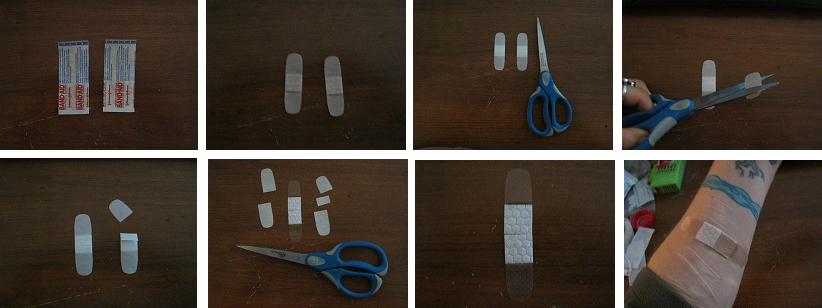
The Cut-and-Tape Method.
Now let’s cut back to the beginning.
Ironic how in order to make this essay under 800 words, I had to do a lot of cutting.
Ironic how during each of my four trips to the psych ward, I had to show the nurse how to tape the gauze over my forearms, so my stitches could heal.
Good editing helps to heal those rough, raw ideas.
What cutting does to me: my mind thinks in the succinct. I’m addicted to white space, three centered asterisks, and one-word paragraphs.
***
See?
***
Asterisks.
***
I blame cutting.
***
The Cut-and-Tape Method creates segmented language, tightens up the words, allows you to sift through thoughts to excavate and present the essence of the story on a page. Cut it up and rearrange. The real story’s there—under the fluff of supposed storytelling.
Why tell a story like this:
Jack and Jill went up the hill to fetch a pail of water. Jack fell down and broke his crown and Jill came tumbling after.
When you could lyric-essay the hell out of it, like so:
Jack and his hill, Jill and her pail, water and falling. A crown, broken. Jill tumbles.
***
When your writing feels like it is tumbling all over the place (when your skin has too many scars), when your sentences simply ramble (and your skin becomes addicted to that feeling), refer to a 12-step program to recover from your sprawling words (to recover from cutting too much).
- We admitted our work became unmanageable
- Came to believe that buying scissors and tape would solve everything
- Made a decision to print out the essay one-sided and commit to the oncoming activity
- Made a searching and fearless amount of highlighting to figure out our themes
- Admitted to ourselves and everyone that, as we picked up the scissors, we were determined to recognize the exact nature of what was wrong with our writing
- Were entirely ready to sort through the pile of paragraphs now littering our floors
- Humbly asked ourselves to forever obsess about the order of those words
- Made a list of all the edits we needed to do
- Made direct actions in order to approach addressing aforementioned list
- Continued to use our purchased supplies
- Sought through editing a final essay
- Having had a writerly awakening as a result of these steps, we tried to carry this knowledge on to every future piece of writing
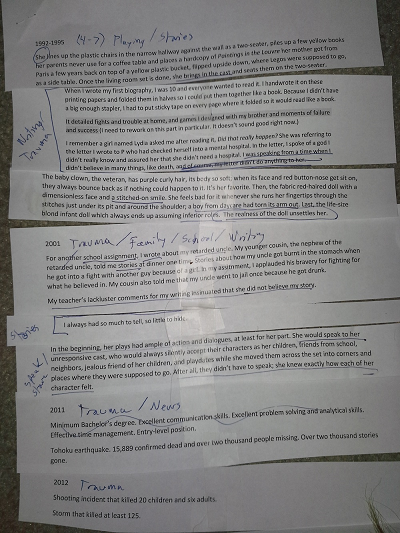
After years of therapy, I have finally started to trust this skin as a final draft and that I won’t cut anything out of it again. I’m finally satisfied with what I have, with who I am and how I have turned out after surviving so much cutting.
Satisfied with how this craft essay turned out after surviving so much cutting.
Have faith in the power of scissors and tape.
Enjoy this irony:
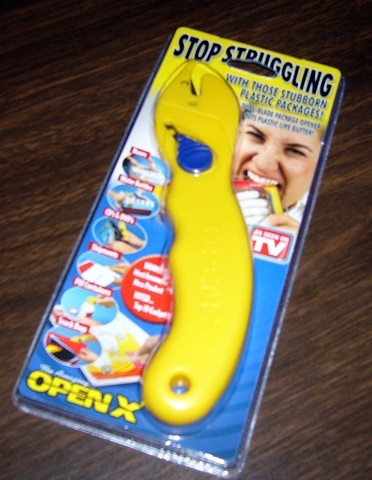
ABOUT CHELSEY CLAMMER
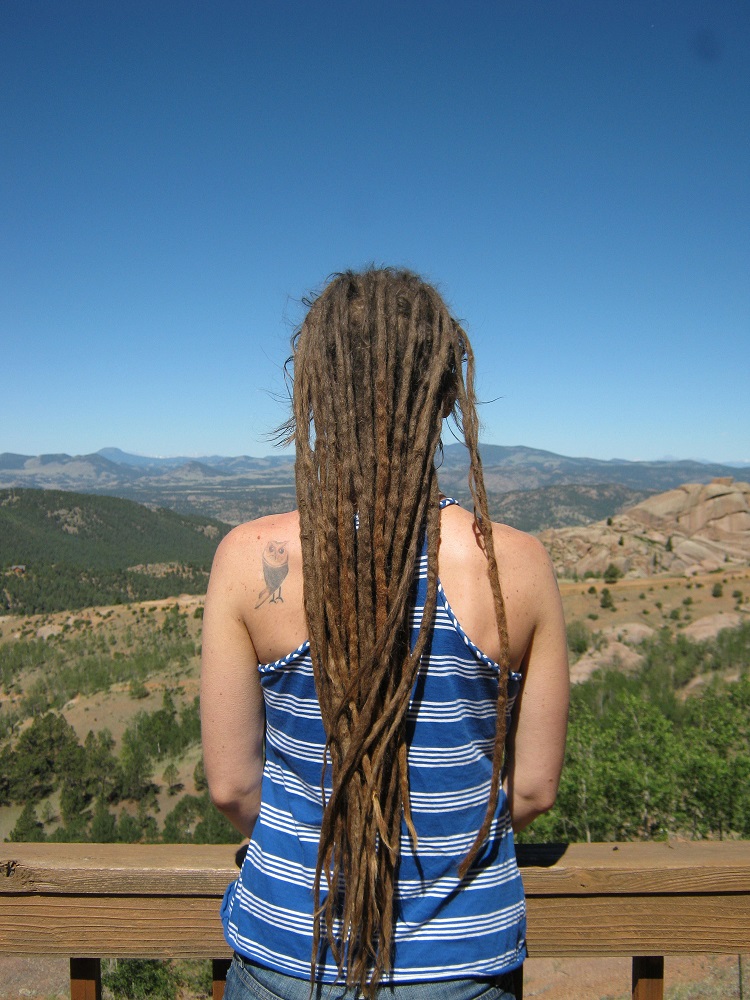 Chelsey Clammer is currently enrolled in the Rainier Writing Workshop MFA program. She has been published in The Rumpus, Essay Daily, The Water~Stone Review and Black Warrior Review (forthcoming) among many others. She is an award-winning essayist, and a freelance editor. Clammer is the Managing Editor and Nonfiction Editor for The Doctor T.J. Eckleburg Review, as well. She is also the Essays Editor for The Nervous Breakdown and Senior Creative Editor of www.insideoutediting.com. Her first collection of essays, BodyHome, is forthcoming from Hopewell Publishing in Winter 2014. Her second collection of essays, There Is Nothing Else to See Here, is forthcoming from The Lit Pub, Spring 2015. Clammer is currently working on a collection of essays, Circadian, that weaves scientific facts with personal stories in order to look at the poetics of the body.
Chelsey Clammer is currently enrolled in the Rainier Writing Workshop MFA program. She has been published in The Rumpus, Essay Daily, The Water~Stone Review and Black Warrior Review (forthcoming) among many others. She is an award-winning essayist, and a freelance editor. Clammer is the Managing Editor and Nonfiction Editor for The Doctor T.J. Eckleburg Review, as well. She is also the Essays Editor for The Nervous Breakdown and Senior Creative Editor of www.insideoutediting.com. Her first collection of essays, BodyHome, is forthcoming from Hopewell Publishing in Winter 2014. Her second collection of essays, There Is Nothing Else to See Here, is forthcoming from The Lit Pub, Spring 2015. Clammer is currently working on a collection of essays, Circadian, that weaves scientific facts with personal stories in order to look at the poetics of the body.
******
On Revision is a column by writers on revising and editing and includes a showcase of the author’s annotated drafts. Chelsey Clammer was a guest on Episode 13 of Behind the Prose.
******
